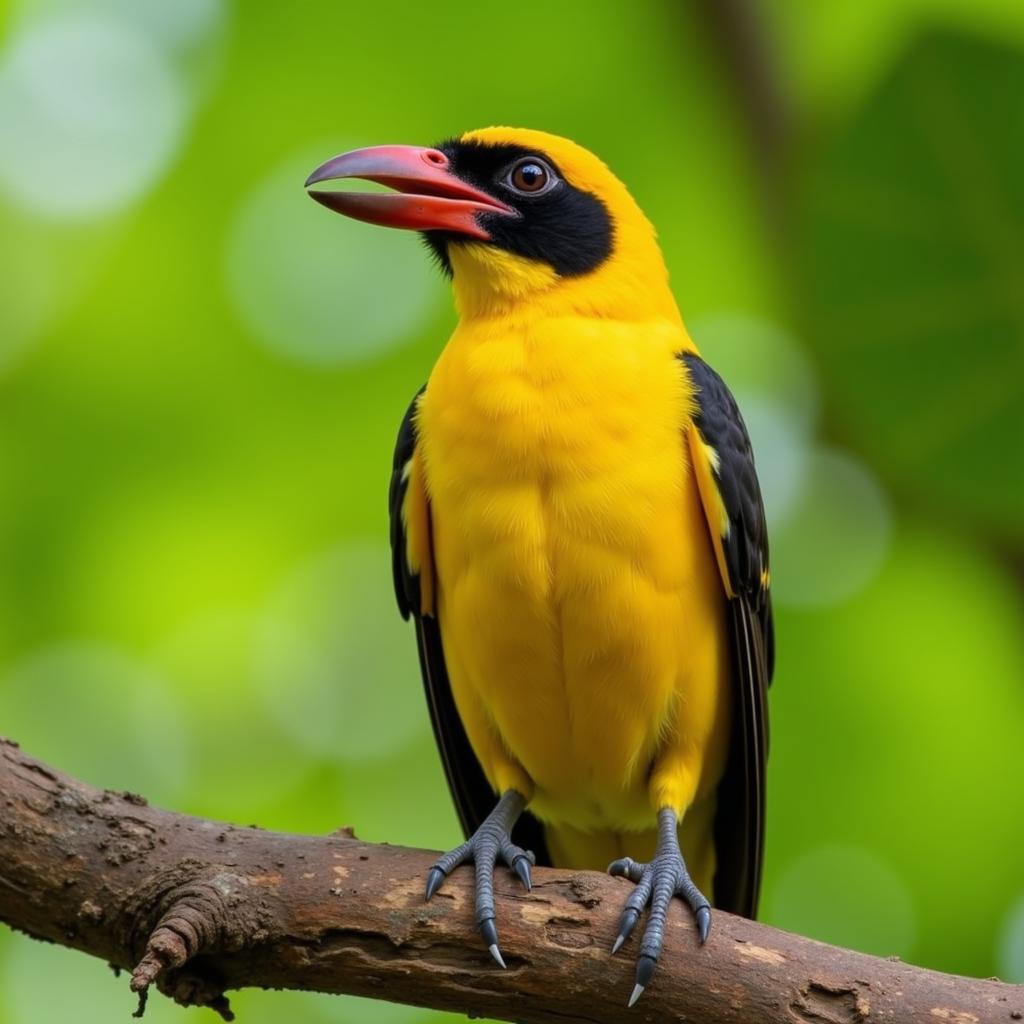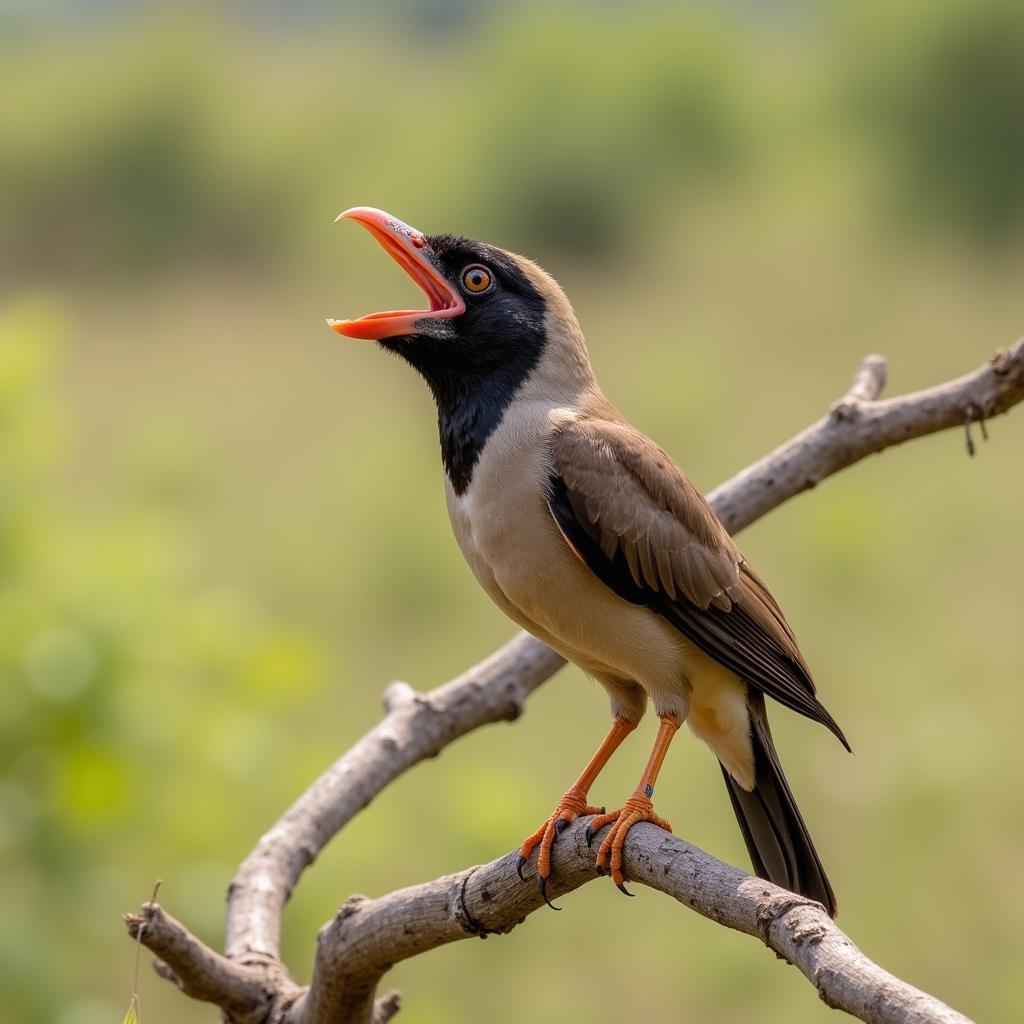Unveiling the African Bishop Bird: A Feathered Master Builder
The African Bishop Bird, a vibrant inhabitant of sub-Saharan Africa, captivates with its striking plumage and intricate nest-building skills. More than just a pretty face, this avian architect showcases a fascinating blend of beauty and ingenuity.
A Splash of Color in the African Landscape
 Male African bishop bird perched on a branch
Male African bishop bird perched on a branch
Male African bishop birds truly live up to their name during the breeding season. Their feathers transform into a brilliant display of sunshine yellow, often accented with black markings around their faces, much like the ceremonial robes of a bishop. This vibrant transformation serves a vital purpose: attracting a mate. Females, on the other hand, maintain a more subtle palette of browns and yellows, providing excellent camouflage while tending to their nests.
Architectural Wonders: The Art of Nest Weaving
The true testament to the African bishop bird’s skills lies in its intricate nests. These aren’t your average twig-and-leaf affairs. These avian architects create meticulously woven masterpieces from grasses, strips of bark, and even spider silk, all intricately intertwined using their beaks. The result? A spherical nest with a small entrance at the bottom, cleverly designed to deter predators and provide a safe haven for their young.
A Symphony of Sounds: Songs of Courtship and Territory
 African bishop bird singing on a branch
African bishop bird singing on a branch
The African savanna is alive with the melodies of these feathered songsters. The males, particularly, are known for their complex and varied songs, used not only to court females but also to establish and defend their territories. Their vocal prowess, much like their vibrant plumage, plays a crucial role in the cycle of courtship and survival.
The African Bishop Bird: A Vital Thread in the Tapestry of Life
The African bishop bird, though small in stature, plays a significant role in its ecosystem. By feeding primarily on insects, they act as natural pest control, contributing to the delicate balance of their environment. Their presence adds vibrancy and complexity to the biodiversity of Africa, showcasing the interconnectedness of all living things.



